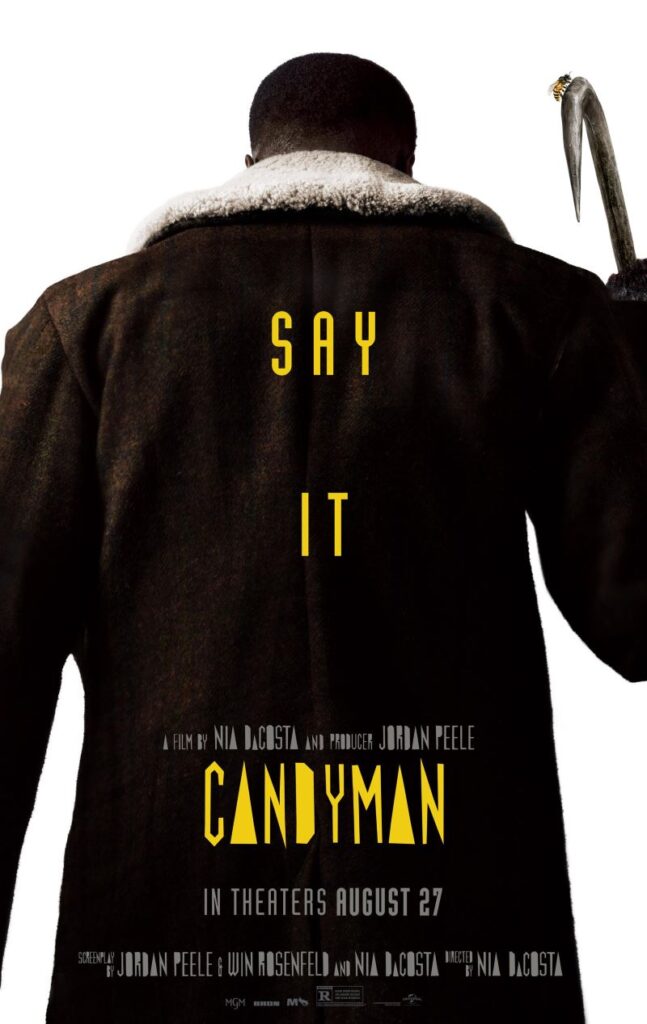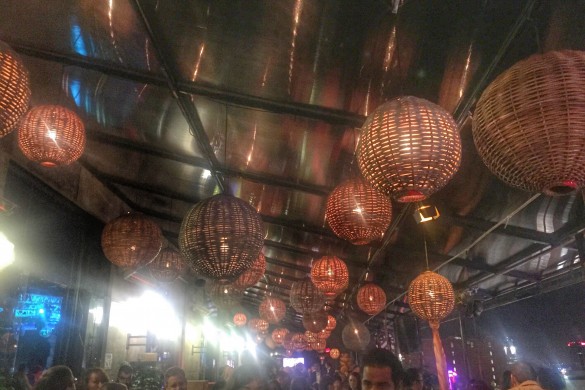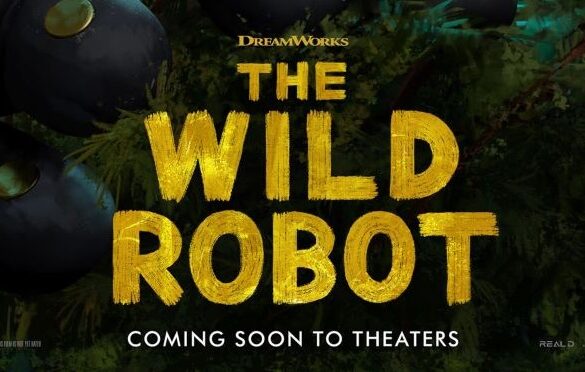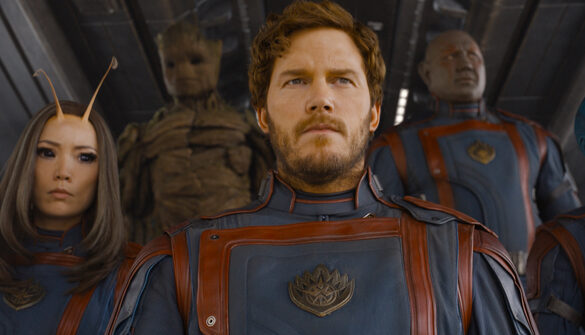Storytelling in the horror genre has always been more than jump scares and terrifying scenes that induce nightmares. If utilized effectively, they can convey powerful commentary on the current social climate that speaks to the injustices experienced by the disenfranchised and marginalized communities. It is an inclusionary genre that audiences and fans can see themselves in because they relate to the characters on screen or empathize with their fight for survival. So, it comes as no surprise that Nia DaCosta’s “Candyman” is a reflection of that model as it reimagines the horror icon for a new era while honoring his legacy and what he means to horror films.

“Candyman” is set in modern-day Chicago, the formerly affordable housing community Cabrini Green projects has been gentrified into an upscale apartment complex where struggling artist Anthony (Yahya Abdul-Mateen II) lives with his now art dealer girlfriend Brianna (Teyonah Parris). The two recognize the history behind this haunted area, which seems to have been erased or turned into an urban myth after a white grad student named Helen Lyle snapped and went on a killing spree – of course, if you watched the original, you know the truth. The two learn that Helen abducted a baby in an attempt to turn him into a sacrificial offering. However, before she could toss him into an annual bonfire, the locals stop her, and instead, she throws herself into it.
To find a subject for his next piece, Anthony heads over to the forgotten part of Cabrini Greens, where he runs into William (Colman Domingo), who tells him how the police have more of a presence now than they did back in the day. And how he is unsure if they are meant to keep the neighborhood safe or keep the people inside as if they were prisoners. As Anthony learns more about Helen, William mentions the truth about Candyman and how the urban legend has many stories and different histories.
Intrigued by this, Anthony uses Candyman as the subject for his next art piece called ‘Say my name,” which encourages attendees to step in front of a mirror and say the name Candyman five times, which will summon the terrifying figure. Though most believe nothing will happen, the people who participate in this will soon learn that there is truth to the legend.
Soon a few people make a connection between the art gallery and the grizzly murders. What’s more, Anthony starts to act very strangely, and his behavior starts to change to a point where he seems obsessed with Candyman. Finally, his obsession becomes so dangerous that he starts to see the terrifying figure in reflections, and he begins to question the very nature of his reality and identity.
Deep down, horror films reflect the society that we live in today, and considering how so many of us ignore the truths of Black trauma. So, a film like “Candyman” helps have a firm grasp of those traumas through entertainment. The impactful storytelling and striking visuals remind us of how a long history of hate and oppression may change, but it remains the same at its core.

One of the more striking visual aspects of it is how “Candyman” tells the story of its titular tragic character through the use of shadow puppetry. While there could have been some silly flashback to the original film, the use of shadow puppetry reminds us of how stories were told before anyone had access to film theaters or television. The abstract storytelling device also shows us the horrors of the past without having to be overly violent or visceral about it. Instead, we get to see something that is artistic and beautiful, all the while shocking and informative.
William makes a point of telling Anthony that the more things change, the more things stay the same. In the film, we constantly hear about how the gentrification of Chicago is doing more damage to the community by erasing the past or boxing Black people in. And it has an effect on the multigenerational communities, where the much younger generation knows little to nothing about the story of Helen Lyle and how the story of Candyman and who embodied that figure has changed. In addition, DaCosta visualizes the ongoing systemic racism suffered by the Black community through the art world and the use of familiar horror tropes.
What’s more, the film assures us that this is a Black story told by Black artists who are taking back histories worth of injustices, police brutalities, and continuing traumas. And “Candyman” turns those fears into something very tangible for those who refuse to believe those traumas exist. As such, the film gives us of those atrocities and injustices a manifestation that we can see.
At the same time, that oppression has taken a new and more contemporary form that has the oppressed questioning the nature of the authentic trauma. “Candyman” tells a relevant story while also connecting to its audience through the lens of horror about the ugliness that is buried deep within the shiny exterior and the lengths to which the white oppressors will go to make sure that history is erased. It goes far beyond exploring the police that filled headlines and news chyrons. Now privileged white art critics devalue artist’s work and the stories they are trying to tell by gaslighting them or saying they fail to convey that message.
In a way, it provides an organic way to move Anthony from turning inspiration into a maddening obsession while also exploring his mysterious past and expanding upon the mythology of Candyman. And it is worth exploring because of how Candyman is directly tied to being disenfranchised and the unending police brutalities inflicted upon the Black community.
There is a lot to unpack. As the film starts to navigate through the honeycomb labyrinth, somehow, the film ends up going from learning about the connections between the man and myth and a history of violence towards Black and Brown people to a more profound mystery. Sure it may be a strange narrative shift, but “Candyman’s” first two acts are entertaining and informative enough to have us overlook the minor flaw.
DaCosta crafts a story, along with fellow producer Jordan Peele and Win Rosenfeld, that recognizes the Black trauma while also celebrating Black joy. It’s certainly a tricky thing to balance out, especially for a horror film. But, horror films have also explored the complexities of real-life traumatic experiences and cultural appropriation by using tangible figures for audiences to comprehend the commentary woven into it. And DaCosta makes sure we connect to that story by having us witness those violent and unacceptable atrocities from those same oppressors and gatekeepers who justify their actions by saying they are keeping people safe or want to help improve. Still, in reality, they are just merely boxing people in or preventing them from succeeding.
And “Candyman” works because it expands on the tragic title character’s mythology and revisits the genuine history of blood-soaked oppression and systemic racism in ways that leaves an uncomfortable impact yet are still very entertaining to watch. The camera work, use of reflections, and shadow puppetry, along with Abdul-Mateen II‘s incredible transformative performance, takes the film to places very few dare to explore. If anything, we should celebrate DaCosta’s reimaging that reveres the iconic horror figure in a very modern way.
8.5/10











